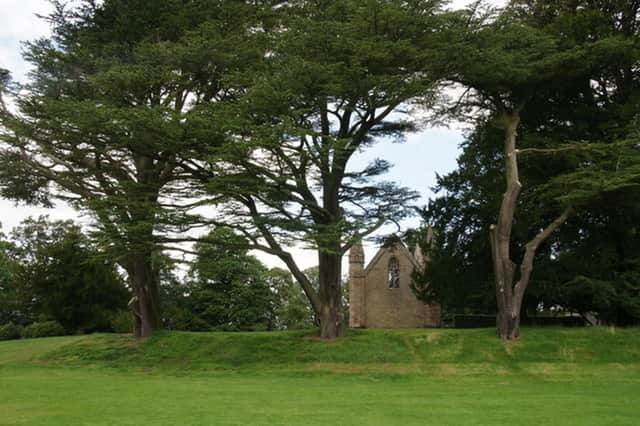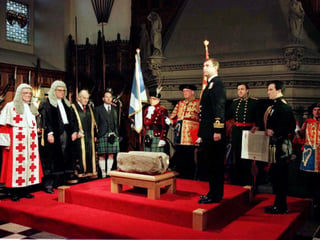The sacred Stone of Destiny where Scottish kings were crowned


Regarded as a sacred object, The Stone of Destiny – also known as the Stone of Scone – is an ancient symbol of Scotland’s monarchy.
Its earliest origins are steeped in various theories and legends.
Advertisement
Hide AdAdvertisement
Hide AdSome say the stone dates from Biblical times with one legend claiming it is the same stone which Jacob used as a pillow at Bethel.
Others have written that it was first used in Argyll for the coronations of the Scots kings of the Gaelic kingdom of Dalriada with it brought to Scone by Kenneth MacAlpin, the 36th King of Dalriada, around 841 AD for his Coronation.
Whatever its origin, the simple block of red sandstone that features only a couple of rings and some chisel marks, has witnessed some of the great turning points in the nation’s history.
On August 8, 1296, the Stone of Destiny was removed from a now vanished abbey near Scone and taken to Westminster Abbey by Edward I as he sought to finally assert his total authority over Scotland.
Also taken were the Scottish Crown Jewels and the Black Rood of St Margaret.
Documents relating to the Scottish throne were also removed but were later destroyed when the ship carrying them sank.
Some claim that the stone taken to Westminster was not the true Stone of Destiny. Legend suggests that as Edward I approached the palace, the monks of Scone removed the stone and hid it, replacing it with another stone of similar size and shape.
It was last used in 1953 for the crowning of Elizabeth II at Westminster Abbey, where it became part of the Coronation Chair, although some doubt if it is actually the true Stone of Destiny.
Advertisement
Hide AdAdvertisement
Hide AdThe stone taken to London lay undisturbed in Westminster Abbey for almost seven centuries until Christmas Day 1950, when four Glasgow University students stole it after breaking into the landmark. Then returned to Scotlad in 1996 and placed at Edinburgh Castle, the Stone of Destiny is on the move once again.
